

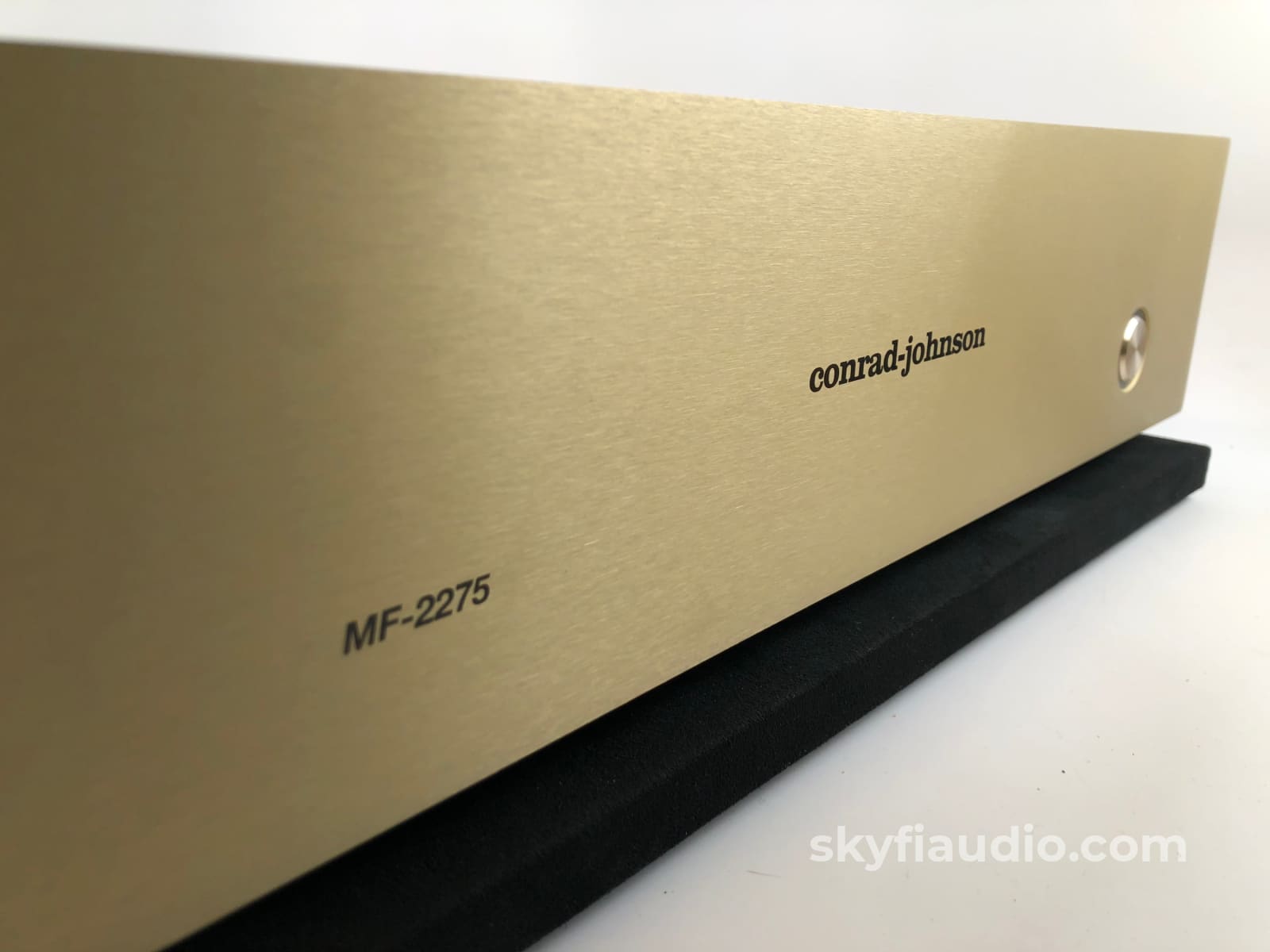
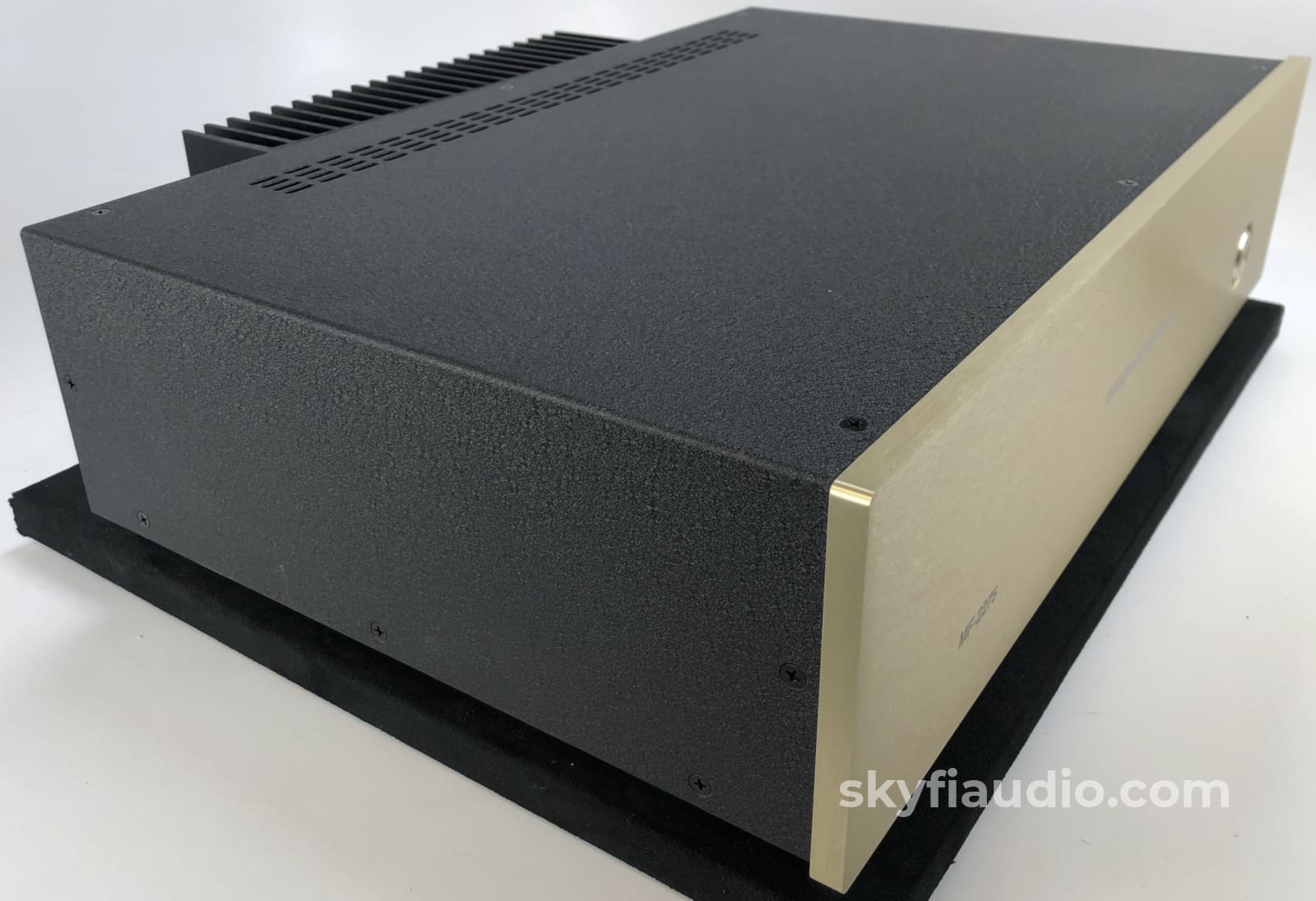
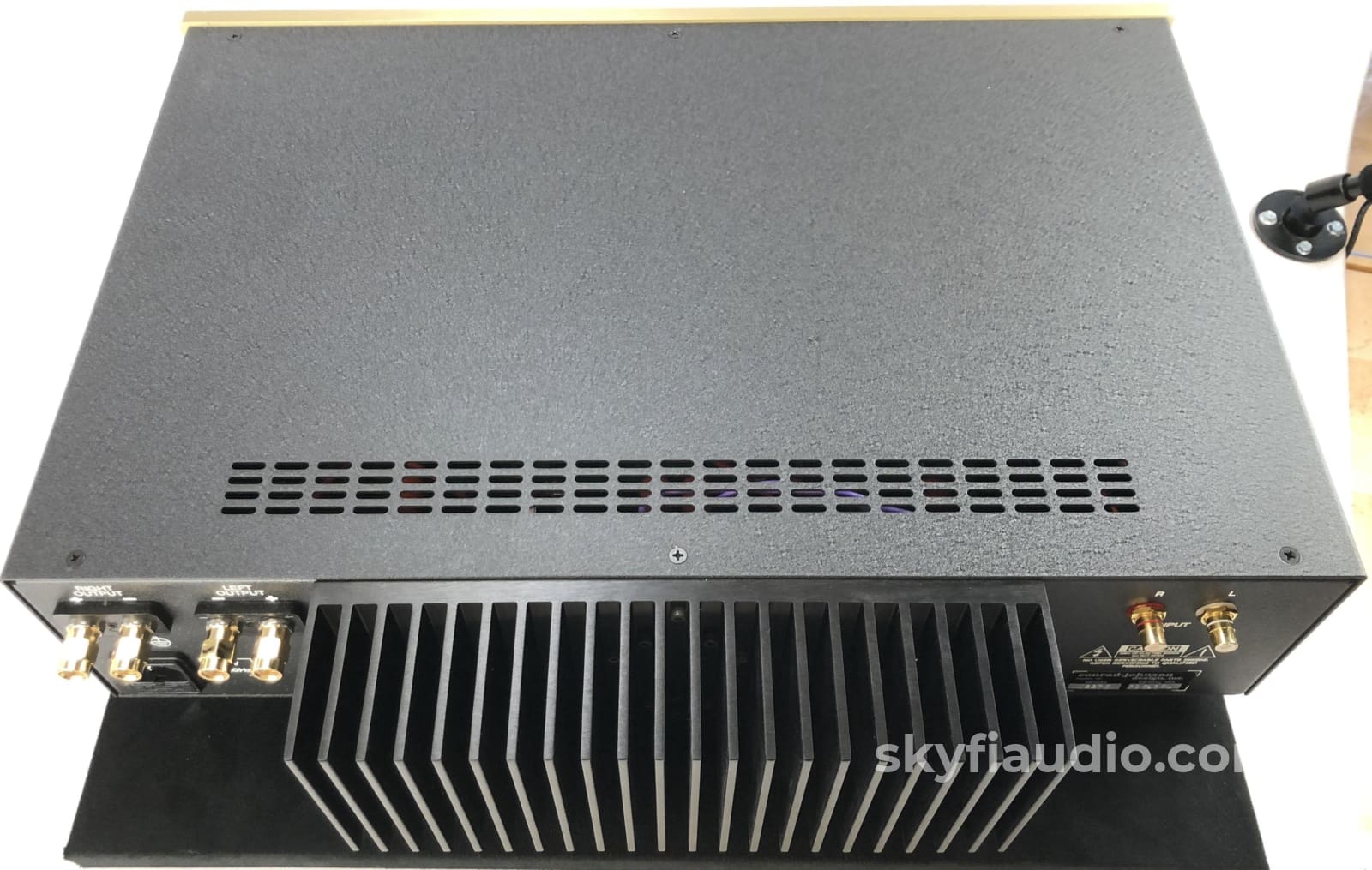
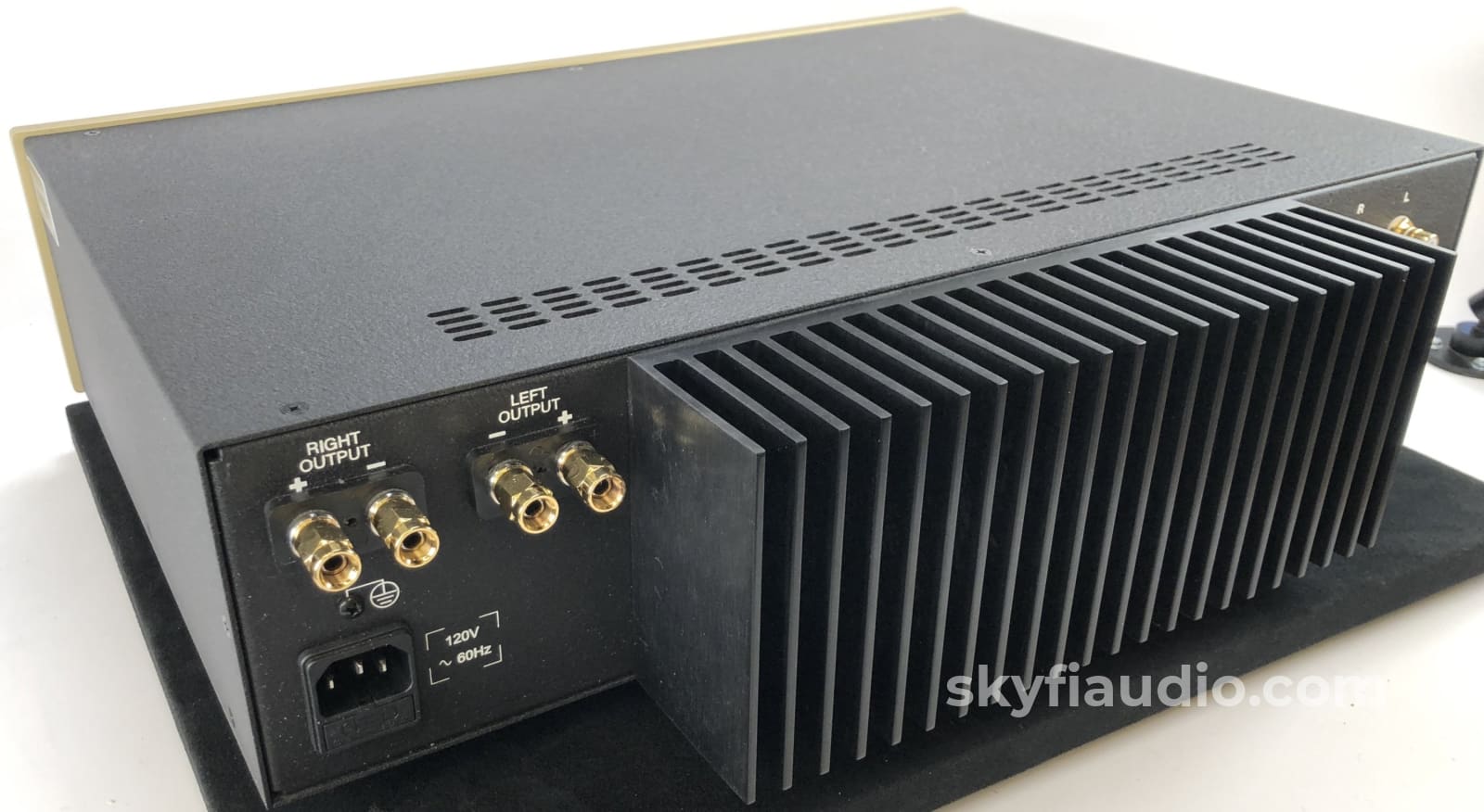
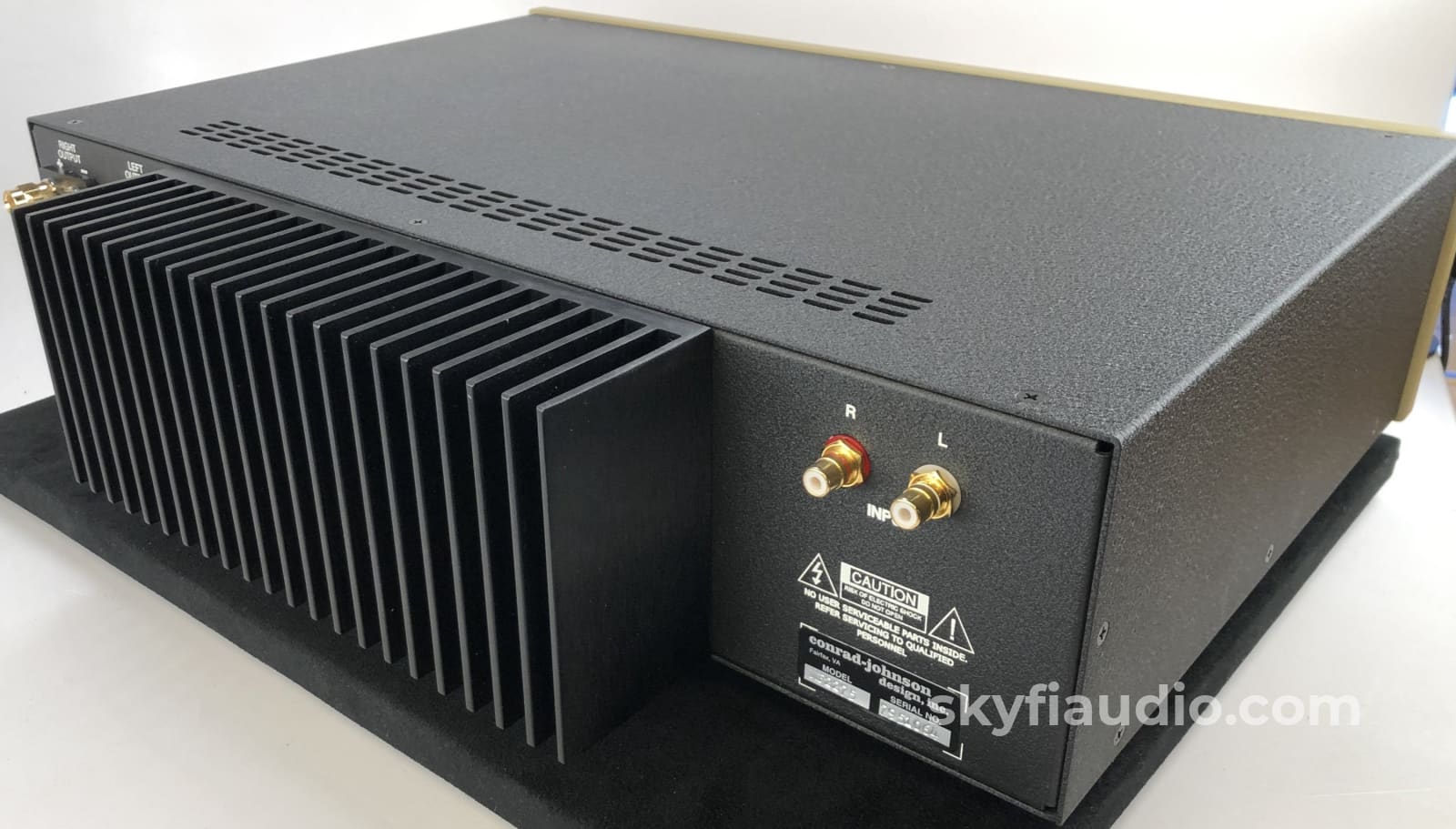
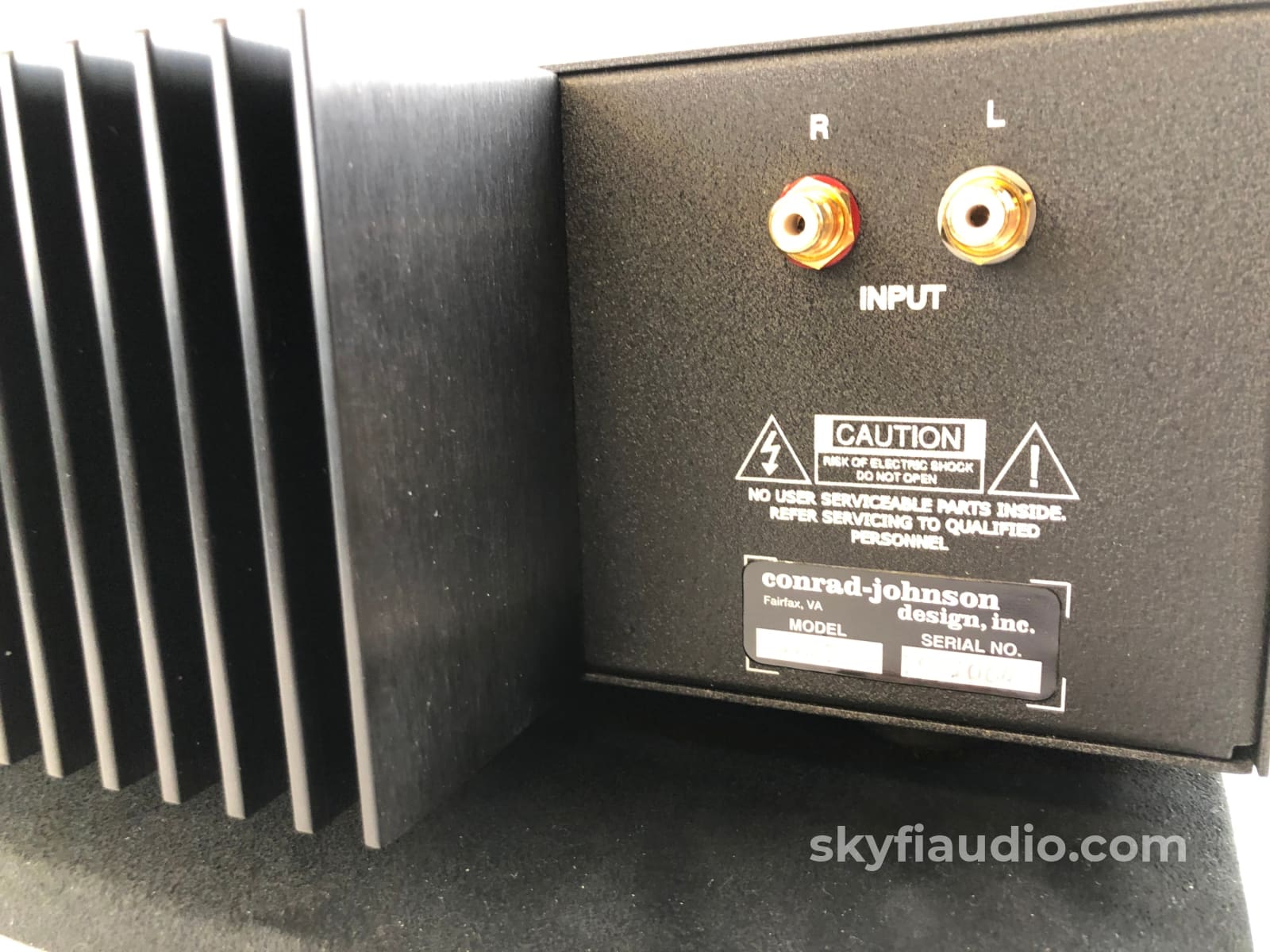
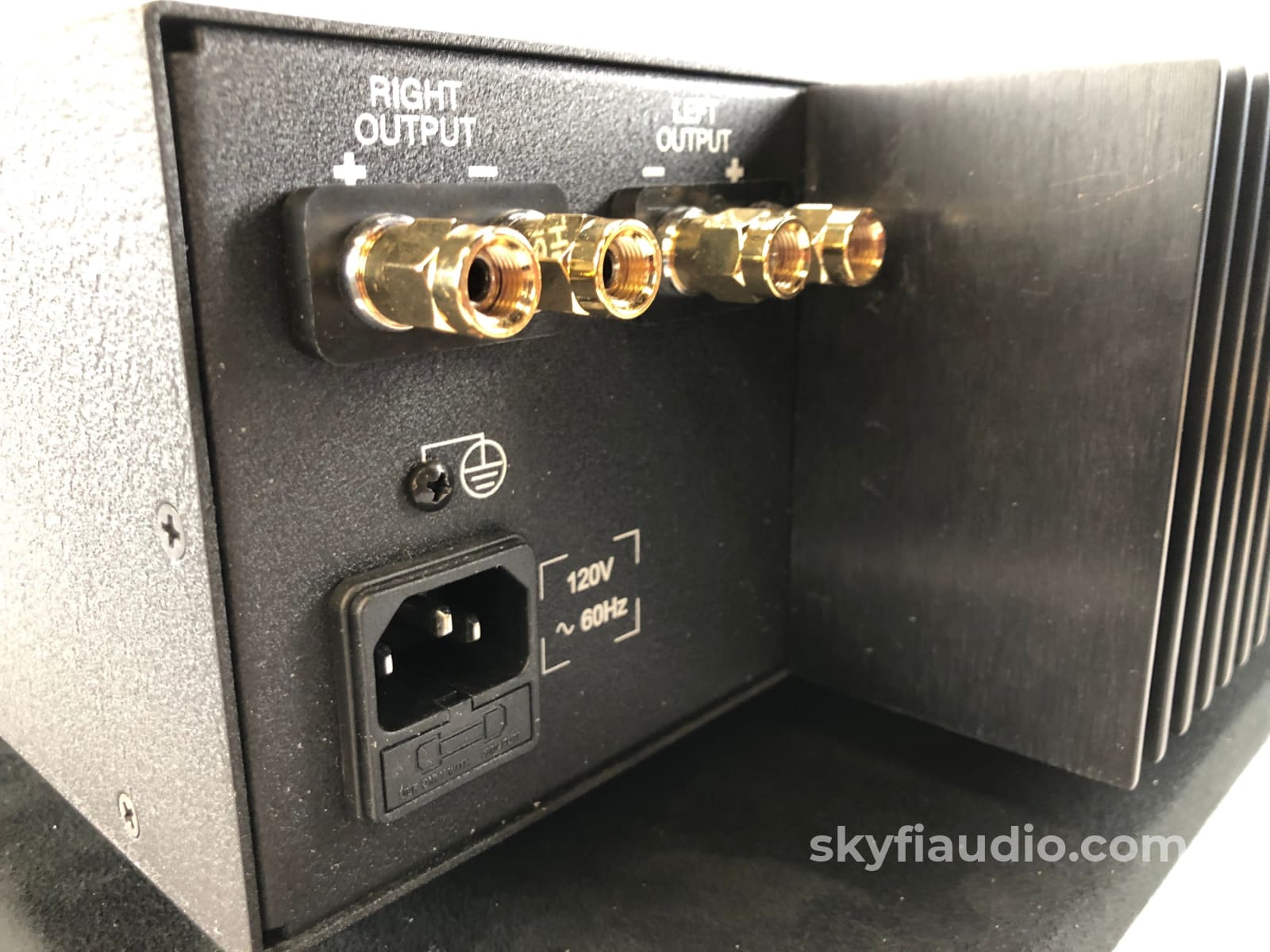
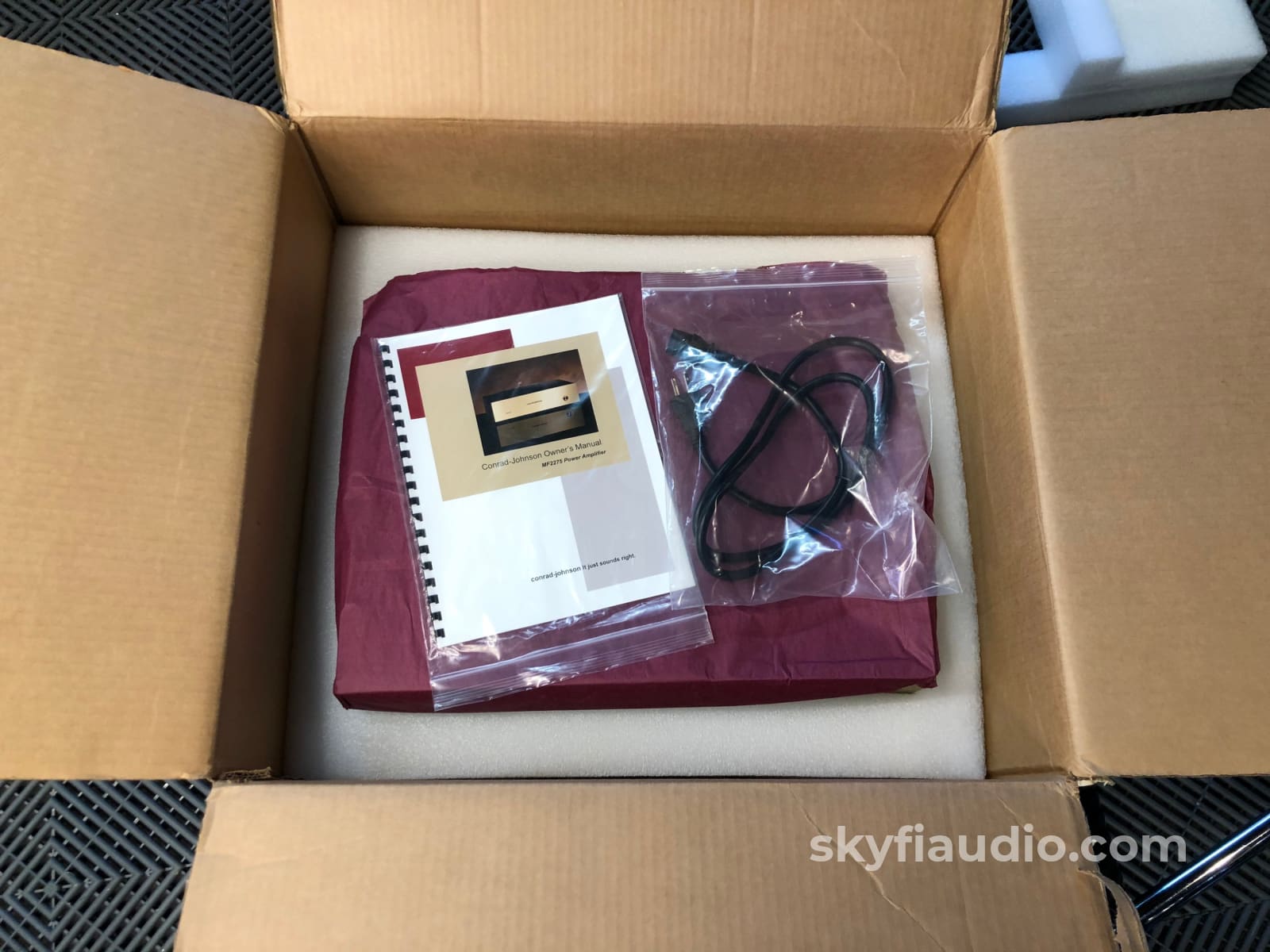
Conrad-Johnson MF2275 Solid State Amplifier - Like New In Box
Free Shipping on Most Electronics - Excludes Speakers and Items Requiring Freight - Contiguous U.S. Only
Pickup currently unavailable at SkyFi 479

Conrad-Johnson MF2275 Solid State Amplifier - Like New In Box
SkyFi 479
479 South Broad Street
Glen Rock NJ 07452
United States
This looks and feels like it was never used and comes complete with its original box and manual.
We are loving the gorgeous gold brushed finished faceplate.
More from CJ:
MF2275 Solid State Amplifier
At conrad-johnson we have a simple formula for achieving highly accurate, highly musical amplifiers:
• straight-forward, simple circuits designed for linear operation without excessive loop inverting feedback
• exceptional component parts selected for their ability to provide uncolored accuracy in music reproduction
Straightforward circuits provide simpler, more direct signal paths and require fewer component parts to implement.
This is desirable because all component parts fall short of ideal and impose limits to transparency. Fewer parts means less of the unavoidable coloration that is imposed by each part, even the best available. Fewer parts means that the budget can be concentrated to obtain the often costly best available parts especially for key circuit applications.
The design of limited feedback circuit demands discipline from the circuit designer in developing a circuit in which each stage functions linearly without requiring external correction from a feedback loop.
Our latest solid-state amplifier, the MF2275, nicely embodies this approach.
High voltage FETS permit highly linear operation of the critical first voltage gain stage, while bi-polar transistors are used to configure an output stage with low output impedance to deliver maximum current to reactive speaker loads.
Linear operation of the audio circuit requires a power supply designed to maintain absolutely fixed operating voltages while meeting current demands that fluctuate rapidly with the music itself. This imposes on the power supply similar design and component choice requirements as on the audio circuit itself. These amplifiers feature discrete dc regulators to power the critical voltage gain stage. The power supplies and grounds for the input and output stages are run by separate power transformer windings to isolate the input stage from the effects of the substantial current flows required in the output stage.
Circuit design is a combination of science and art.
At every step consideration must be given to how a circuit will be implemented. The realized performance will depend critically on the selected component parts. Conrad-Johnson products are known for unmatched quality of parts with custom-made film capacitors and precision metal film and metal foil resistors. We even use large 30 micro-Farad polypropylene capacitors for critical circuit applications where other designs commonly use non-polar electrolytic capacitors, the factor of 1000 reduction in dielectric absorption of polypropylene resulting in a cleaner sound. The power supply electrolytic capacitors are bypassed with high quality polypropylene film capacitors that provide a small but quicker responding current reservoir.
For those wishing to take the musical experience a step further there are available special “SE” versions of these amplifiers which achieve further refinement in imaging, focus, and detail by upgrading a dozen or more critical capacitors to our proprietary CJD Teflon hybrid capacitors and a couple of dozen resistors to precision metal foil types.
Our obsession with parts quality extends to the connections within the circuit itself.
Power supply, signal and ground traces and wiring are parts of the circuit with limitations and shortcomings that must be accounted for. To enable the output stage to deliver substantial bursts of current, the layout provides storage capacitors close to each output device. The internal power supply connections and ground returns between the main supply and these local storage depots are accomplished with heavy, audiophile grade multi-stranded wire in order to minimize the impedance of these longer runs.
Thoughtful engineering, specification of high quality component parts, and painstaking care in production make these exceptional audio amplifiers. We invite you to arrange an audition with your conrad-johnson dealer to confirm for yourself their extraordinary musical performance.
Click here for a PDF copy of the Conrad-Johnson MF2275 Owner's Manual
MF2275 Specifications
Power:
135 watts per channel RMS both channels driven into 8 ohms from 20Hz to 20KHz at no more than 1.0% total harmonic distortion or intermodulation distortion.
Sensitivity:
1.35 V rms to rated power
Frequency Response:
20Hz to 20 kHz +0/-.3 dB Hum and Noise: 100 dB below rated power output Phase: phase correct
Input Impedance:
100 kOhms
Dimensions:
14.625"D x 19”W x 4.875”H
Net Weight:
33 lb. net
Fuses:
There are 5 fuses in the MF2275. One is the ac power line (mains) fuse. It is located in the IEC power cord receptacle. The other four fuses are in the DC power supplies for the output stages one for the positive (B+) and one for the negative (B-) supply to each channel. These B+/B- fuses are located on the top of the main printed circuit board. Be sure to disconnect the amplifier from the ac mains power (wall outlet) before removing the top cover.
Never replace a fuse with a value or type different from that originally supplied by the factory. Correct values and types are listed below. In the event of a fuse blowing repeatedly, contact your dealer or the conrad-johnson service department.
AC Mains Fuse: 5x20mm T-Type:
6.3 amp if configured for 100 or 120V
3.15 amp if configured for 220 or 240V
B+/B- Fuses: 3AG 4 Amp, fast blow
Our Testing Process for Amplifiers (Solid State) at SkyFi:
We start with a visual inspection of all internal components to make sure there are no signs of stress or aging. Capacitors are checked for telltale sings of bulging or leaking, resistors are checked for signs of overheating or cracking, and transistors are checked for signs of stress or damage.
We then power up the unit carefully and run a simple 1k sine wave while monitoring the output on an oscilloscope for signs of distortion or noise. Finally, we run the amplifier to its full rated power into the appropriate resistive load provided by our Sencore amplifier tester. If there is an issue, it will usually be noticeable at this point. If everything reads clean, we will often test for THD (Total Harmonic Distortion) measured by our Keithley distortion meter, and compare it against the original manufacturers specifications. The amplifier then remains powered on to "burn in" on our test bench for a few hours to make sure there are no heat related issues. If there are balanced inputs available they will be also be tested.
Final testing involves pushing actual music thorough the amplifier. We've learned over time that some issues are only noticeable to a trained ear while listening to familiar source material. Our test bench has reference vintage Kef speakers that we're very familiar with which quickly reveal any discrepancies. Some amplifiers will then move into our listening room where they are tested with our in-house reference speakers of choice.
Please click here for detailed specifics regarding our specialized packing process that separates us from the rest.
|
Item |
Included |
|
Original Box |
Yes |
|
Manual |
Printed and Online |
|
Remote |
N/A |
|
Cables |
Yes - Power |
|
Physical Condition |
9 |
|
Working Condition |
10 |
Choose options
